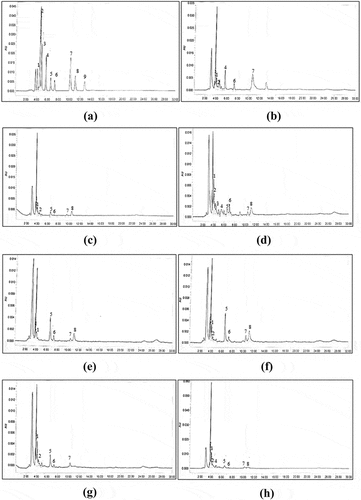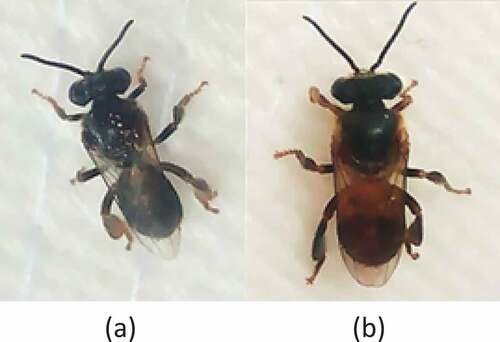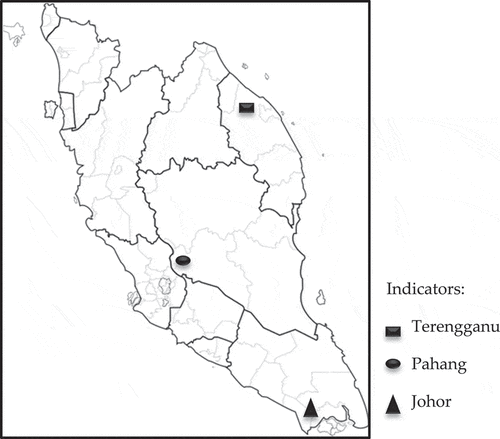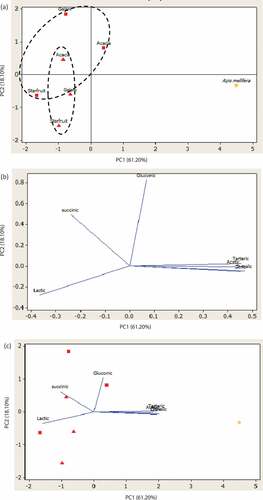Figures & data
Table 1. Description of the source of stingless bee honey used in this study
Table 2. Physicochemical parameters of stingless bee honey from different floral origins
Table 3. Colour characteristics of stingless bee honey from different floral origins
Table 4. Sugar content (g/100 g honey), fructose/glucose (F/G) and glucose/water (G/W) of stingless bee honey from different floral origins
Table 5. Organic acids concentration (g/kg of honey) of stingless bee honey from different floral origins
Figure 3. The HPLC Chromatogram of (a) organic acid standard mixture; (b) Apis mellifera honey; (c) Acacia honey (HT); (d) Acacia honey (HI); (e) Starfruit honey (HT); (f) Starfruit honey (HI); (g) Gelam honey (HT); (h) Gelam honey (HI). HI = Heterotrigona itama; HT = Geniotrigona thoracica. Peak identification: 1 = Gluconic; 2 = Tartaric; 3 = Formic; 4 = D-malic; 5 = Lactic; 6 = Acetic; 7 = Citric; 8 = Succinic; 9 = Fumaric

Table 6. Total phenolic acid contents (TPC) (mg GAE/100g), total flavonoids content (TFC) (mg QE/100 g), antiradical scavenging activity (IC50) (mg/mL) and ferric reducing antioxidant power (FRAP) (µmol FeSO4.7H2O/100 g)
Figure 4. The IC50 graph of stingless bee and Apis honeys. HI = Heterotrigona itama; HT = Geniotrigona thoracica; RSA = Radical scavenging activity

Table 7. Pearson’s Correlation coefficients (r) analysis among total phenolic contents, total flavonoids content, antiradical scavenging activity (IC50), ferric reducing antioxidant power (FRAP), colour, ash and HMF content of stingless bee honey



